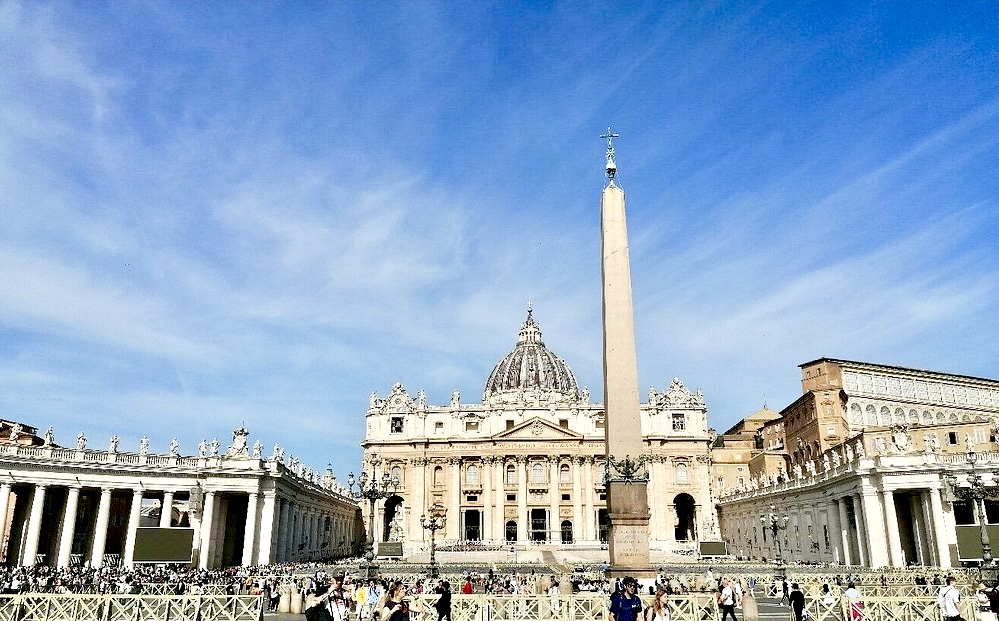
They say “all roads lead to Rome,” but the locals told us “all roads lead FROM Rome.” The Romans did construct more than 250,000 miles of military roads and highways. Today, roads in Rome are crammed with cars, scooters, tour buses, crazy traffic, and never-ending noise. Rápido! Rápido! WALK when you can in Rome; stay off the roads!
This 2025 travel re-post is a result of several friends and blog followers asking for Italian travel information, plus my memories of an Italy trip our family took with Monograms Independent Travel (now called Globus Independent).
Our trip to Italy included three good days in Rome. Monograms expertly planned our VIP sightseeing visits for St. Peter’s Basilica, the Vatican Museums, the Roman Colosseum and Forum. So, this Part One travel blog on Rome will focus on those attractions.
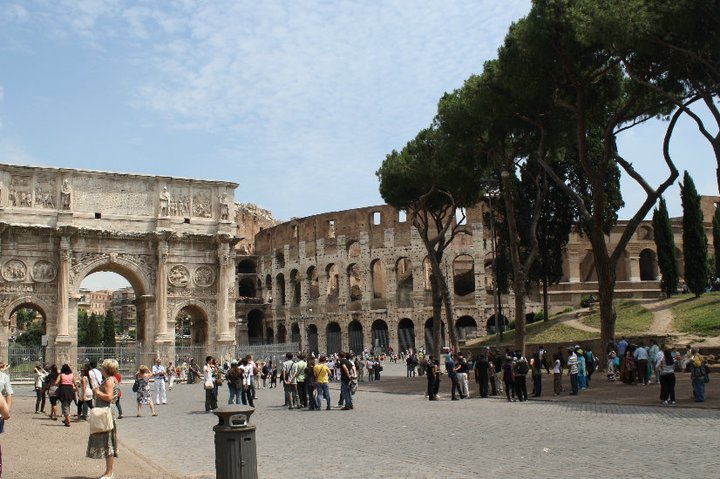
Did you know Rome is older than Italy? Rome was founded in 753 BC along the Tiber River — making the city (and the capital of Italy) more than 2000 years older than Italy.
Legend tells us ancient Rome was founded by two brothers: Romulus and Remus. After a petty sibling fight, Romulus killed Remus, became the ruler King, and named Rome after himself.
Most of us equate Rome with gladiators, chariot races and Caesars. The Roman Empire began in 31 BC and lasted until the fall of Rome in 476 AD. Before that, Rome was ruled by kings (625-510 BC), then it began a Republican Kingdom from 510-31 BC. The Byzantine Empire came after the fall of Rome but ended in 1453. Fast forward hundreds of years, many kingdoms, duchies, city-states, an attempt to unify as a country in 1896, and Italy finally became a nation in 1946.
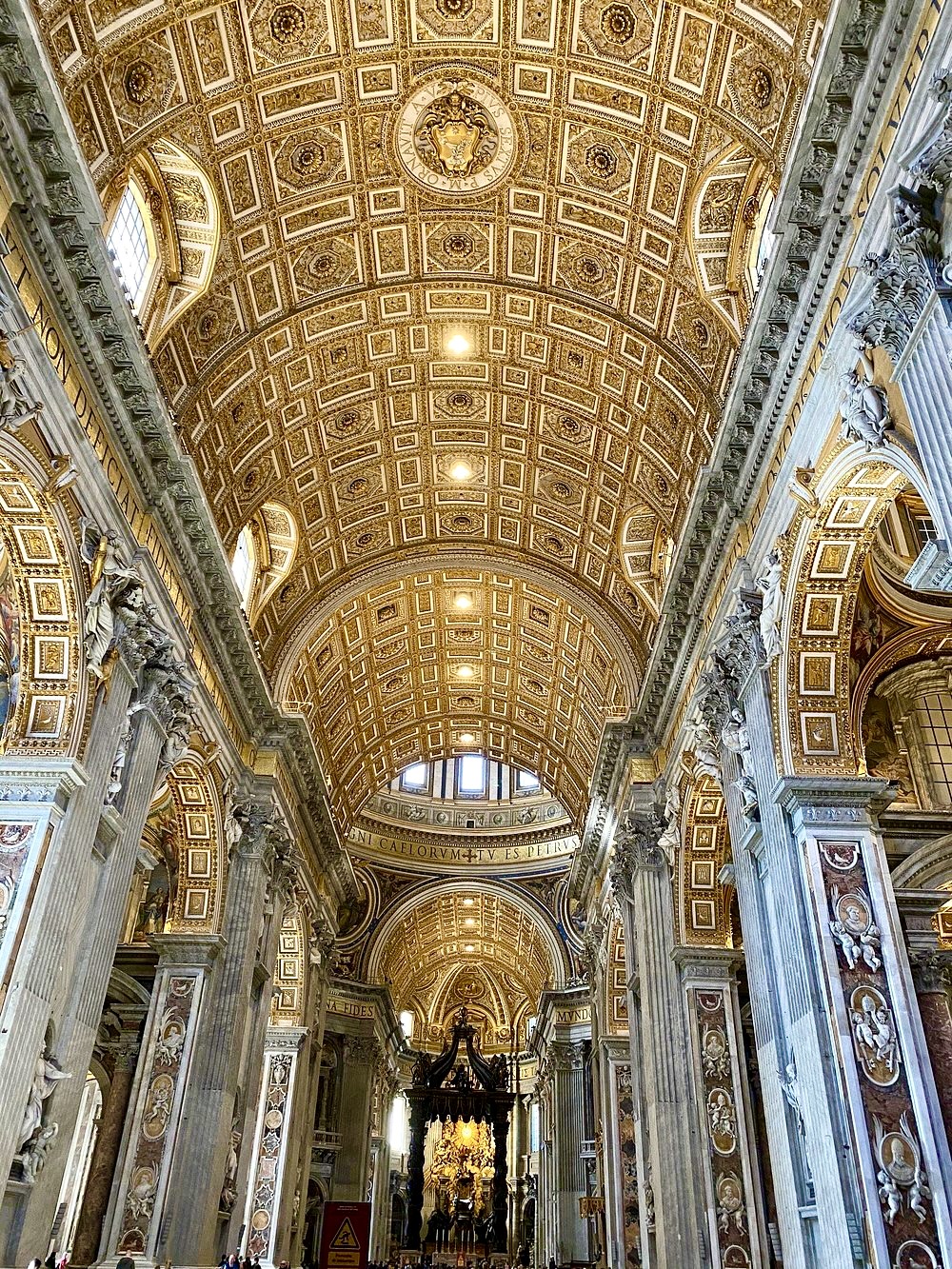
Take in the sheer scale and breathtaking interior of St. Peter’s Basilica!
Rome is steeped in both history and art. You won’t find me listing the top five Rome museums to visit. Go straight to its churches for medieval architecture, sculptures, mosaics, tapestries, and masterpieces from Michelangelo, Caravaggio, Bernini, Raphael, da Vinci, Bramante, and more.
Except for a few churches, you can walk in without paying a fee. Be considerate because locals go to these worship sites, especially early in the morning, to pray and reflect before starting the day.
Sacred Site Ground Rules: Dos and Don'ts
Strict, non-negotiable dress code rules apply for entry into Italian churches. However, there is no requirement to be Catholic, Christian or even religious.
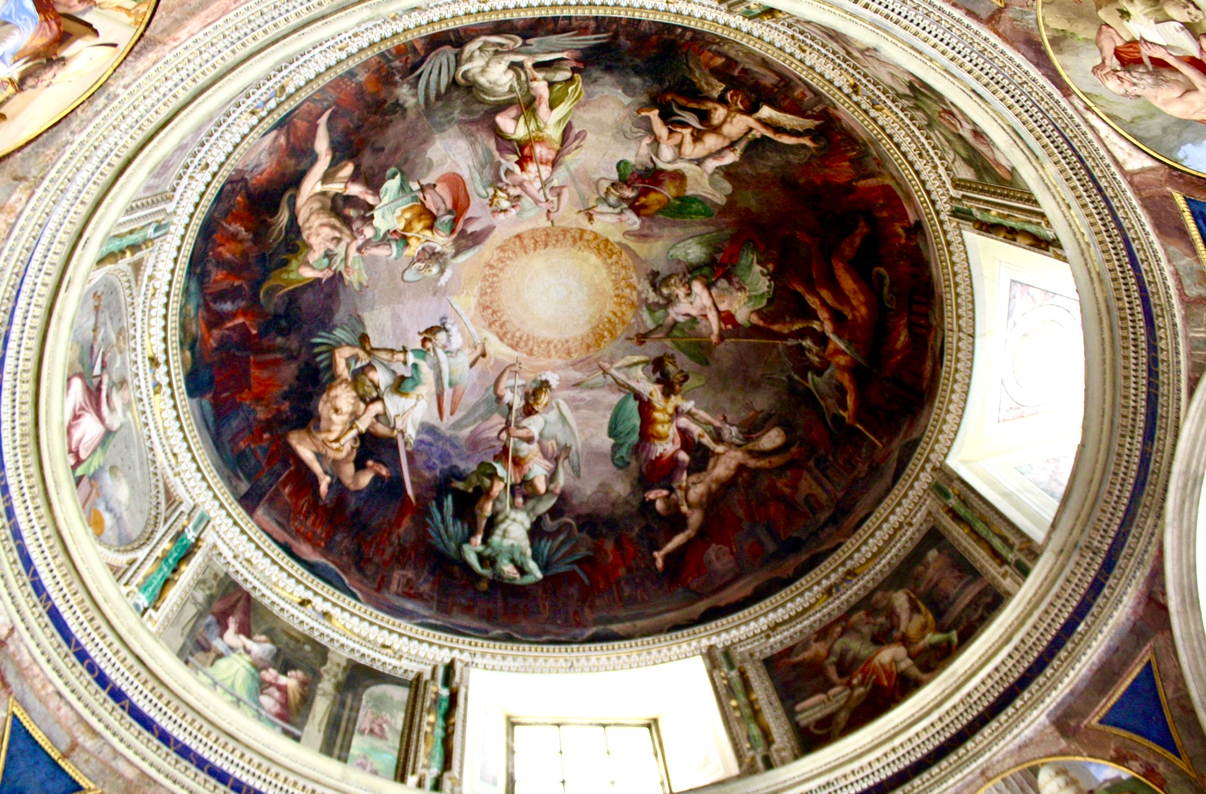
Be respectful when you visit sacred or religious sites. Shoulders and knees should be covered for both males and females. No low-cut garments, shorts above the knee, mini-skirts, flip-flops, or hats are permitted. Either dress appropriately or take along something to cover up.
TIP: We did see some Italian churches provide baskets at the door with wraps or even paper-like, throw-away ponchos, but don’t count on it.
Where's the World's Smallest State?
Unique to Rome is Vatican City, the Catholic Pope, and the world’s smallest state. It’s the site where the Apostle Peter was martyred, and buried, and the Vatican became the residence of the majority of Popes who succeeded him. (There must have been some drama in the 1300s because seven popes and a few antipopes lived and served in Avignon, France–instead of Rome).
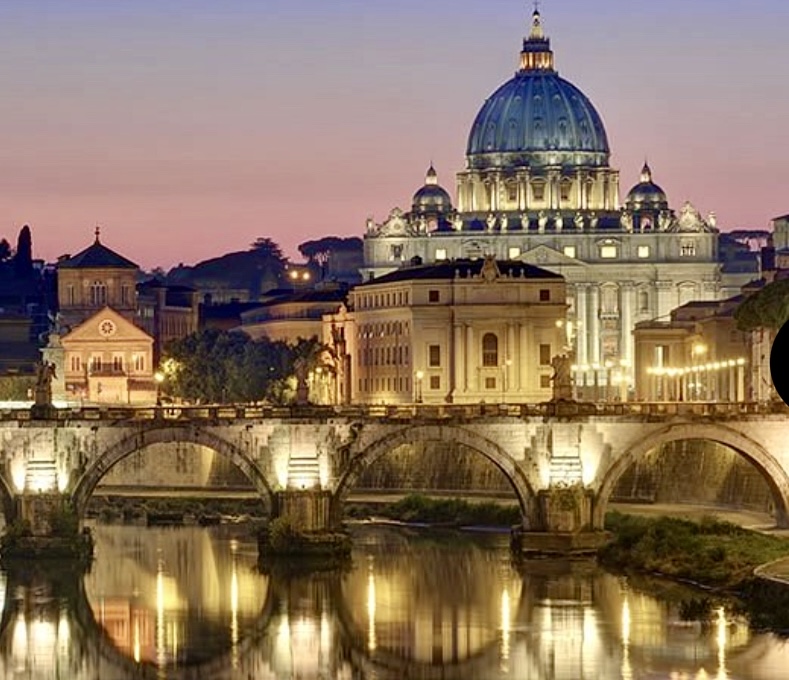
Evening photo of the Tiber River with St. Peter’s Basilica
Smaller than most college campuses, Vatican City occupies 106 acres filled with the great St. Peter’s Basilica, the pope’s residence and papal palaces, the Vatican Museum collections, and the famous Sistine Chapel. It also has its own currency, newspaper, radio station, bank, post office and judicial system. The Vatican is the World Capital of Catholicism and points to Rome as the Eternal City.
Vatican Museums Highlights
A guided tour is suggested because the 26 Vatican museums and 54 galleries contain the immense art collection accumulated by every pope since the 1600s. It can be daunting! http://www.museivaticanitickets.com
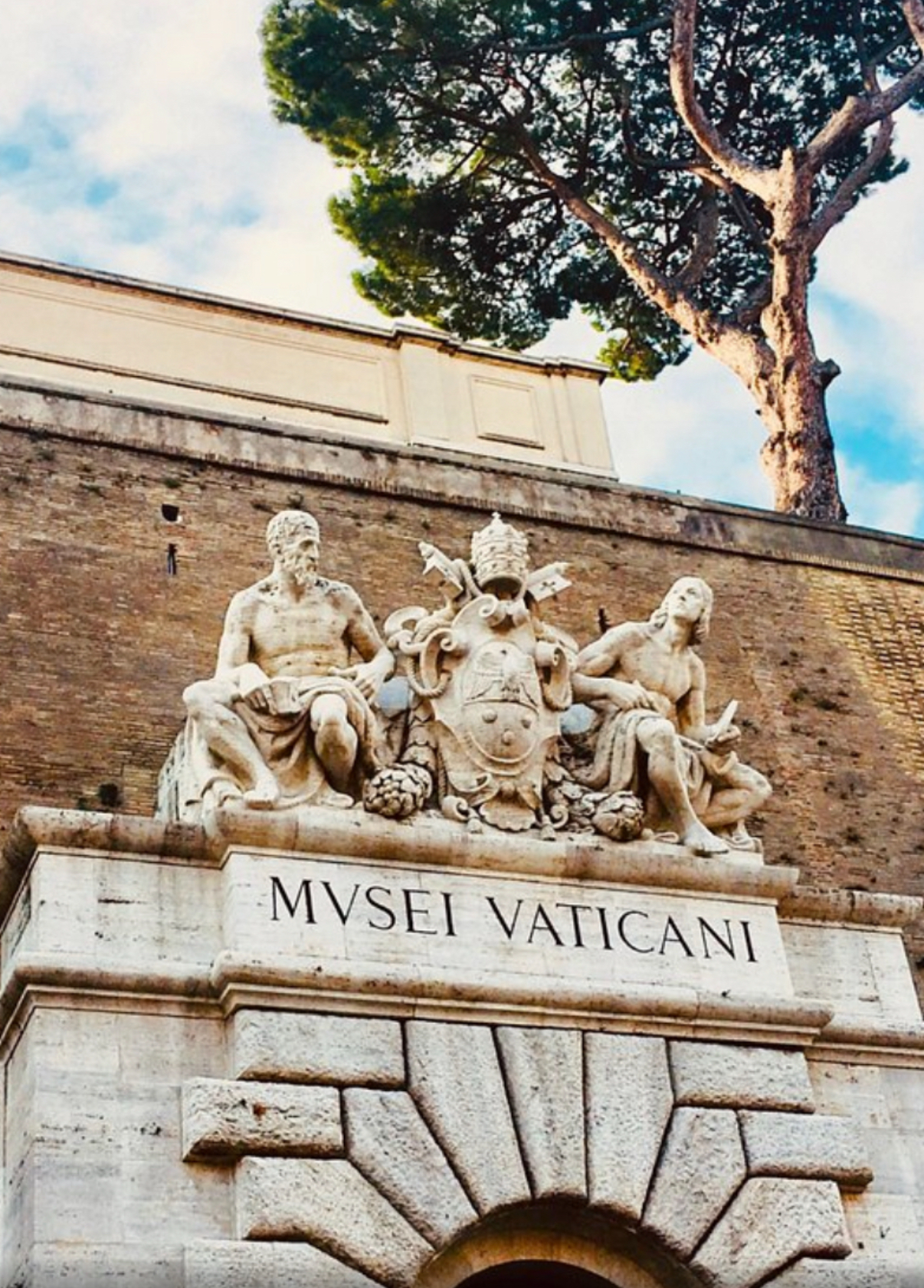
Michelangelo (representing sculpture) and Raphael (representing painting) are featured above the Vatican Museums entrance.
Honestly, the main event is the Sistine Chapel. If you have time constraints, search for “Cappella Sistina” signs, and go directly to the Chapel. Otherwise, you’ll want to visit several worthwhile galleries.
The Gallery of Tapestries is a display of enormous woven textiles along an 800-foot-long vaulted hallway. Be sure to see the tapestries depicting the ‘life of Christ’ by Raphael Sanzio.
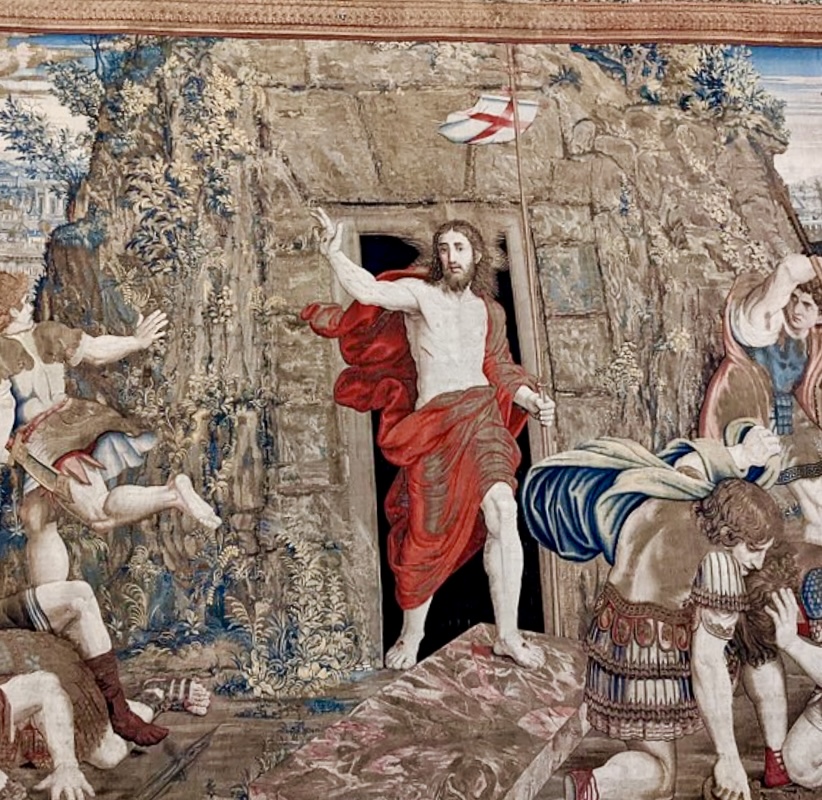
The tapestries were woven in Brussels from Raphael’s sketches, and The Resurrection of Christ tapestry is the most spectacular!
Raphael Rooms – These four gallery rooms house the frescoes of Raphael and his students who completed his works after he died. Giant frescoes line the walls, including Raphael’s masterpiece The School of Athens (below), which depicts the world’s great philosophers.
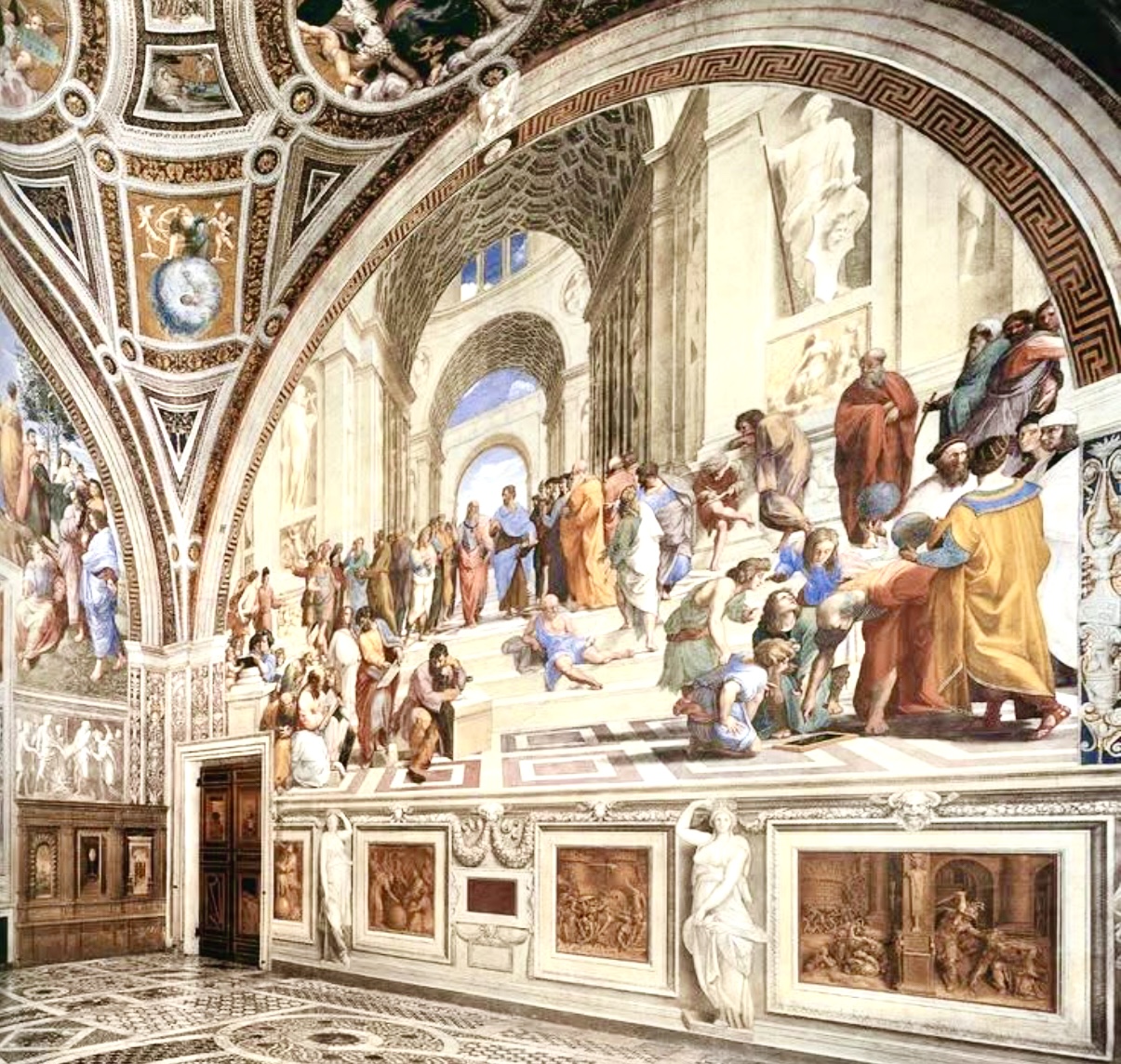
Over 1000 antique sculptures are displayed in the Chiaramonti Museum. You’ll find almost 500 paintings and masterpieces in the Pinacoteca Gallery, and there’s even a collection of contemporary art.
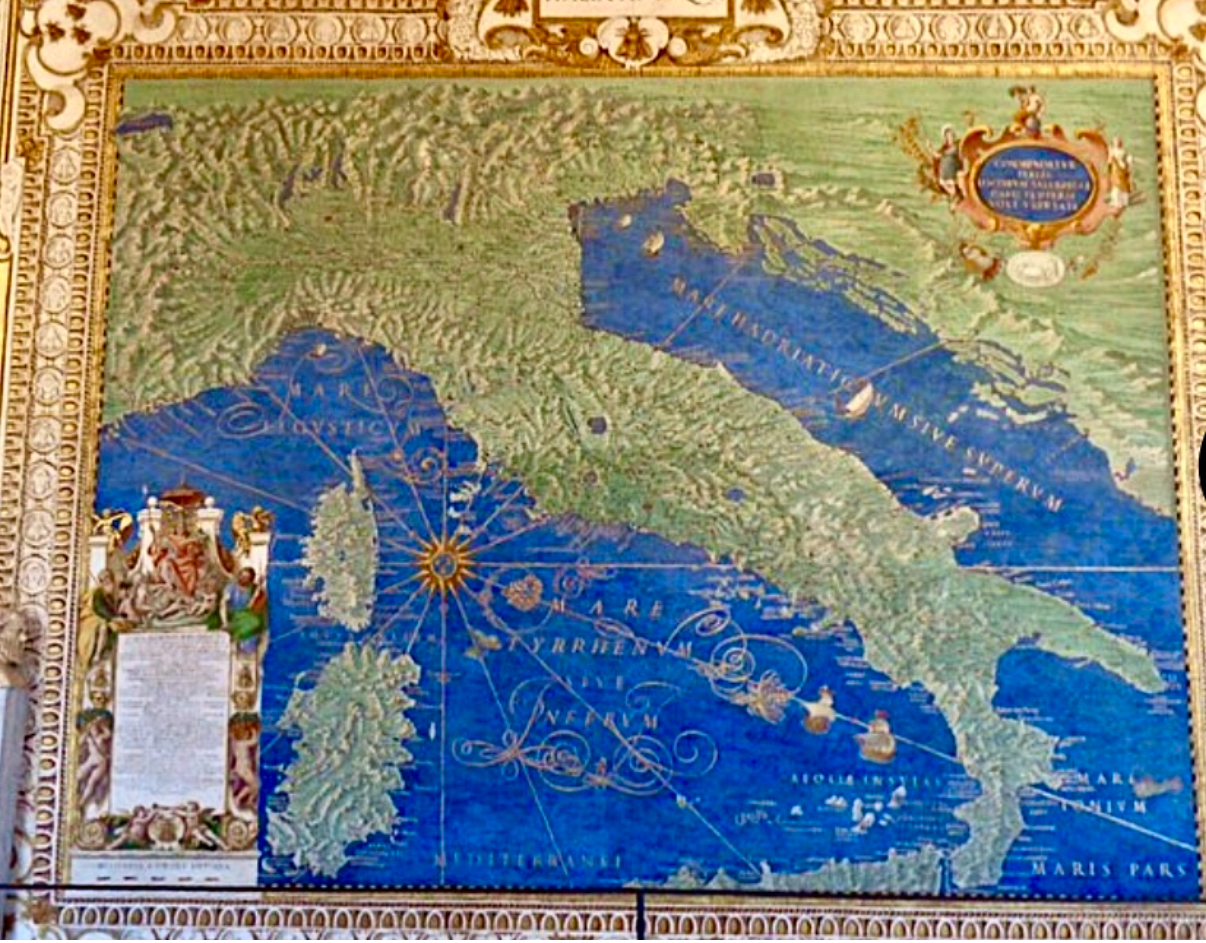
The Gallery of Maps (above and below) is a 400-foot hallway covered top-to-bottom with 40 geographical fresco maps painted by Ignazio Dante, a Dominican monk and cosmographer. I can’t imagine the work involved!
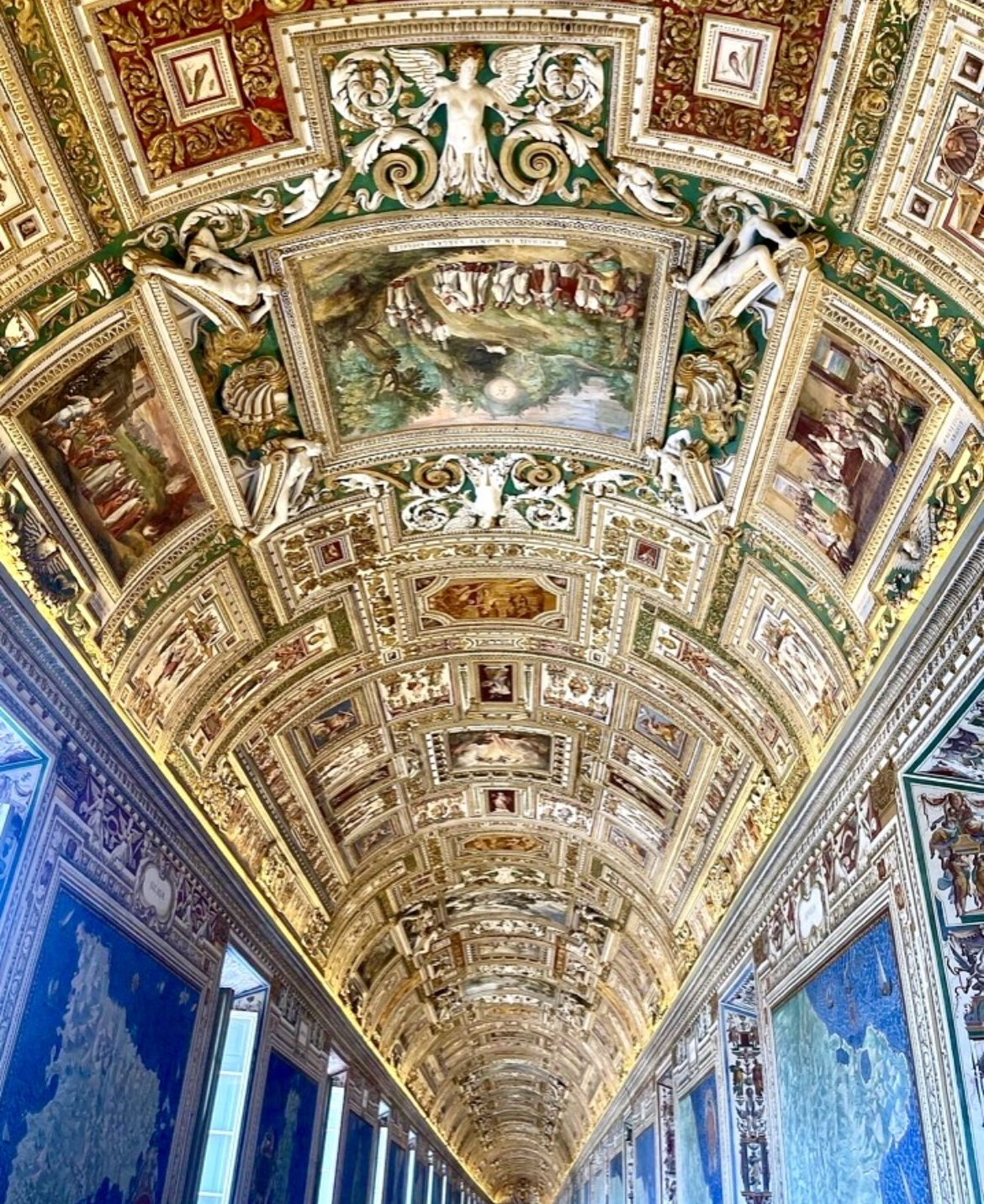
The Most Visited Room in the World
Finally: The Sistine Chapel! In comparing my tour with 2025 Vatican updates, protocols sound the same. This is the most visited room in the world– plus one of the Artistic Wonders of the World.
Do not violate the Cardinal Rules! Silence is required inside the Chapel. To preserve the frescoes (and the experience), photography and videos are prohibited and strictly enforced. Once you enter the Chapel, find a place to stand or sit for a good viewpoint. Unless you are on a private tour, it will be very crowded.
Then the magic happens! Look up! Enjoy this masterpiece in silence with no one talking, taking selfies, or attempting to “get the perfect picture.” The Sistine Chapel is breathtaking!
Note: I am not adding a photo here; I don’t have one. Pick up a postcard or, like me, purchase a Vatican book as a keepsake of your visit.
TIP: Sharing the Sistine Chapel photos is a copyright law; even sharing them on social media without permission could lead to a fine. So, GET TO ROME AND SEE IT. . . or Google it (trust me: it’s out there).
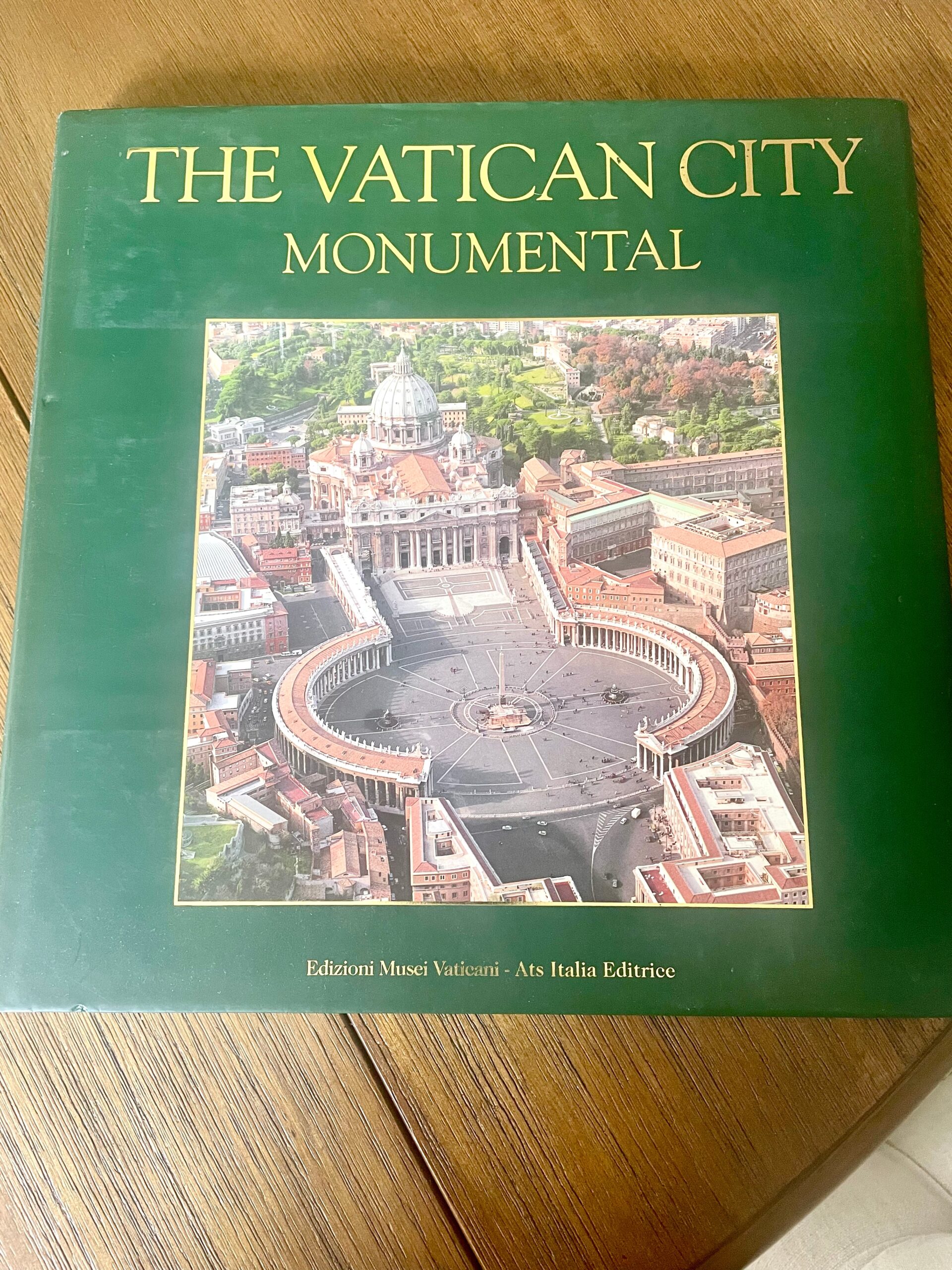
Sistine Chapel Nuggets to Know
The Chapel was built for Pope Sixtus IV between 1473-1481. A 12,000 square-foot barrel vault has 343 frescoed figures designed to match the proportions of Solomon’s Temple in Jerusalem. (Note: This is not a coincidence as it was indeed the Romans who destroyed the second Temple in Jerusalem).
Michelangelo frescoed the 33 ceiling panels for Pope Julius II in just four years (1508-1512). His main panels portray Genesis: the Creation of the World and The Fall of Man.
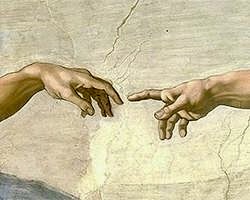
The most famous panel is Creation of Adam. (This is the well-known painting of God’s outstretched right arm to give life from his own finger into that of Adam, whose left arm is extended in a pose mirroring God’s — a reminder that man is created in the image and likeness of God. Genesis 1:26).
Michelangelo adamantly refused to paint the ceiling until forced to do so. He always considered himself to be a sculptor, not a painter.
Other famous artists (Botticelli, Signorelli, Perugino, and Ghirlandaio) frescoed the gigantic chapel walls (68 feet tall) in the 15th and 16th centuries depicting the life of Moses and Christ.
The great altar wall, The Last Judgment, was completed by Michelangelo in 1541. He worked alone on this fresco for seven years as a much older artist in his 60s. It features the souls of the dead rising up to face the wrath of God. This “odd” altar subject matter was chosen by the pope to encourage faithfulness during the Reformation.
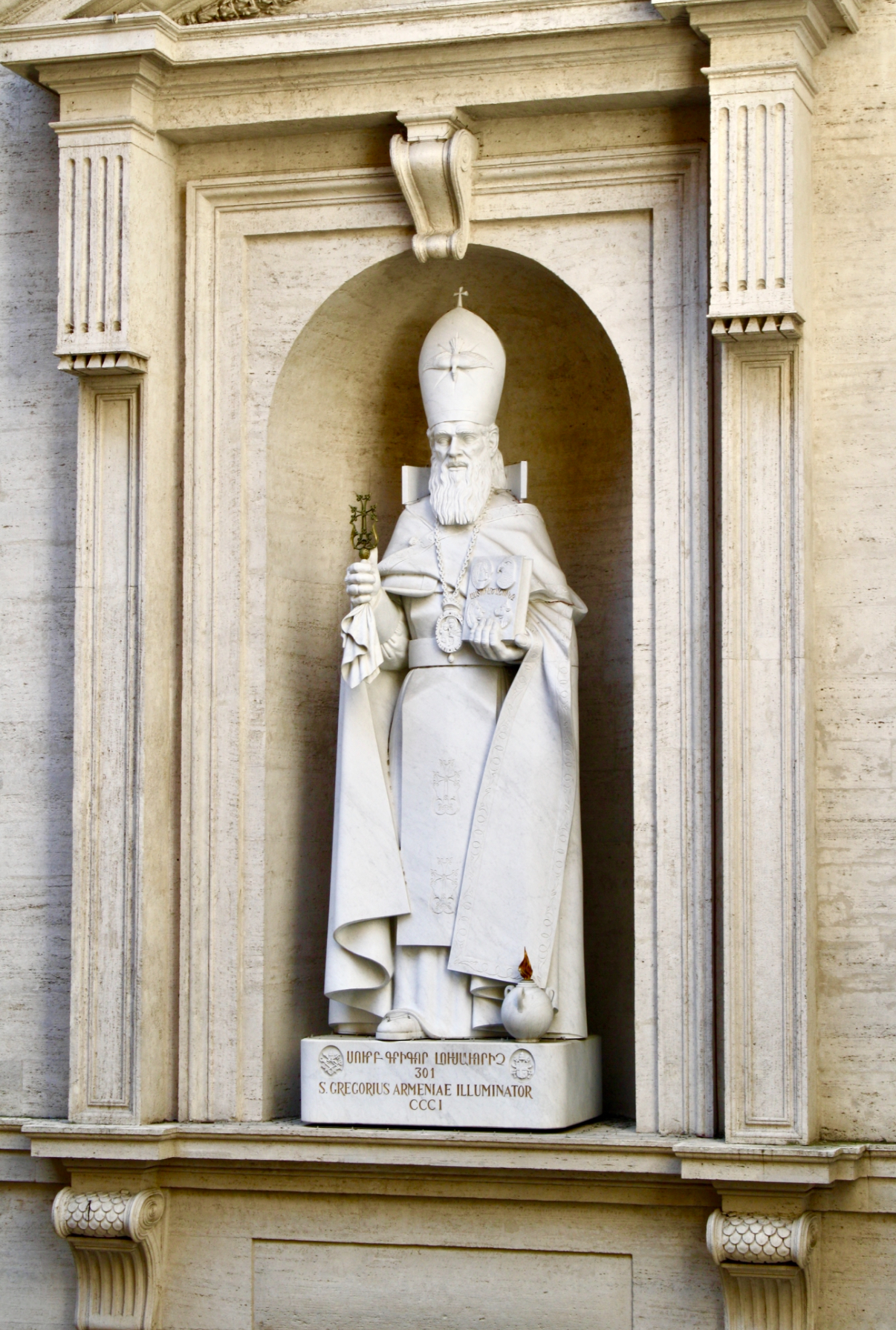
Conclave!
Today, when not filled with visitors or used for special ceremonies, the Chapel is famous for being the site of the Papal Conclave, where the College of Cardinals gather and vote to select all new popes. This happens when a pope dies (or resigns, which is rare). In the past 1000 years, only five popes have resigned.
On May 8, 2025, Pope Leo XIV (the first American pope) was elected to replace Pope Francis after his death on April 21, 2025.
How does the world know when a new pope has been chosen? By smoke signals! WHITE smoke is sent out through the Sistine Chapel chimney pipe indicating a new pontiff. If the Cardinals cannot agree, BLACK smoke (chemicals added to the burned paper ballots) is piped out keeping the Cardinals sequestered with work to do. There are no TikTok videos with dancing Cardinals announcing the new pope!
St. Peter's Basilica
The Vatican Museums and St. Peter’s Basilica are two separate properties but are a close walk to one another. There is no fee to enter the church, but be prepared for long lines and thousands of people. When in Rome, this is a “must see!”
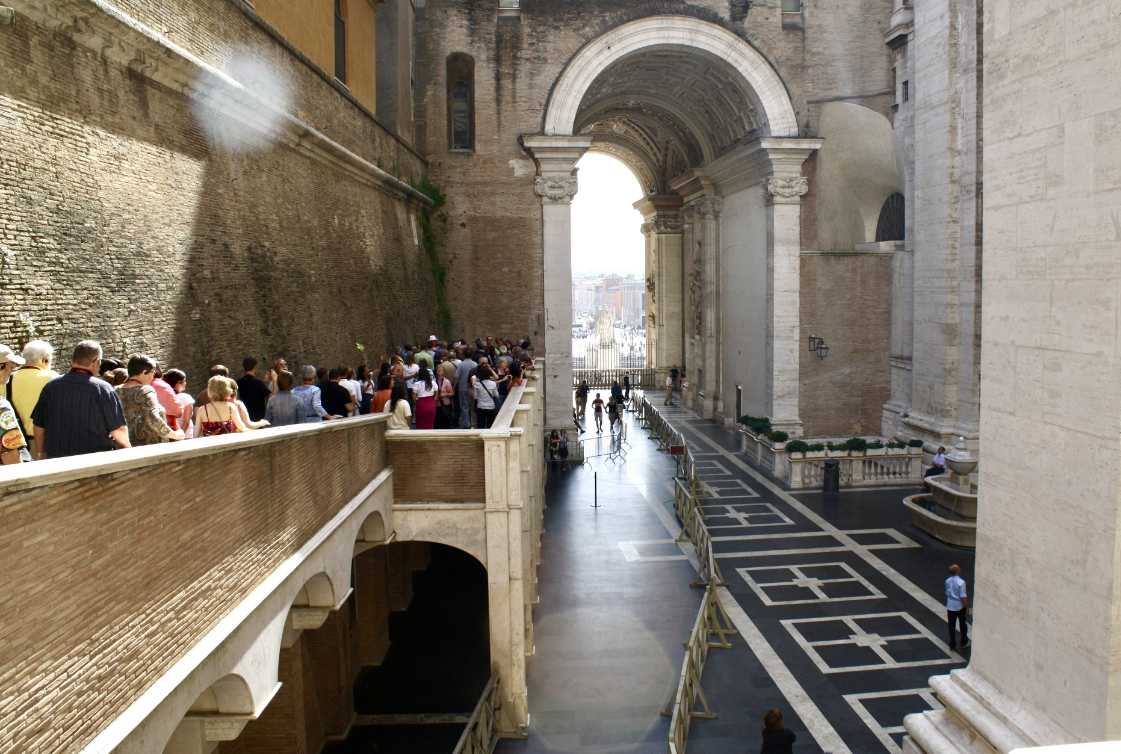
Our guide led us to the Basilica, skipped the lines, explained some history, and gave us free time to explore.
This great St. Peter’s Basilica, completed in 1626, replaced the 4th century basilica built by Constantine the Great. At 227,060 square feet, it is the largest Christian church building in the world and is regarded as one of the holiest Catholic shrines. http://www.basilicasanpietro.va
Multiple architects–including Bernini, Bramante, and Michelangelo–designed the Baroque and Renaissance basilica shaped in a huge Latin cross covered with a massive dome.
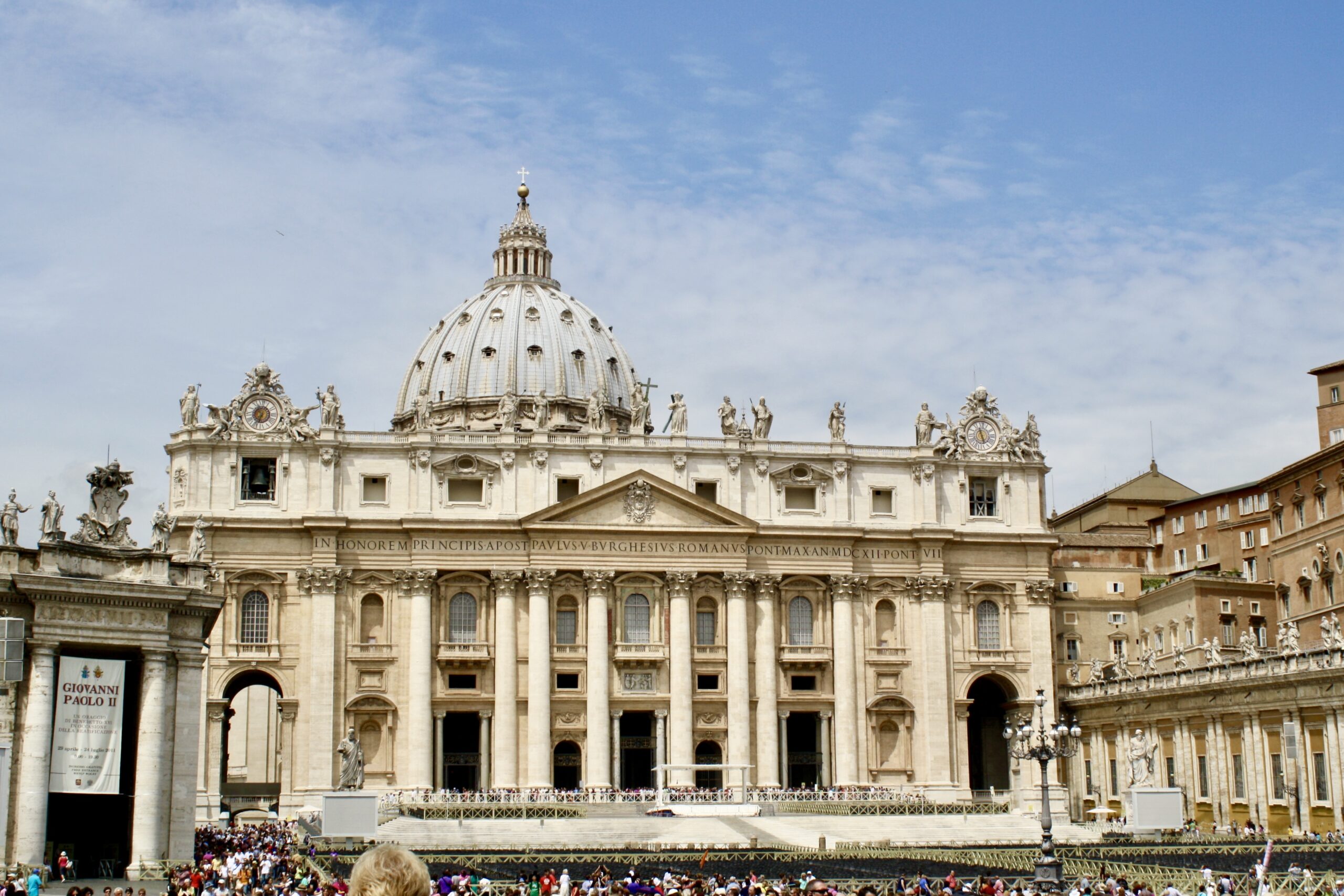
The basilica was built over the burial site of the Apostle Peter (the first Bishop, or Pope, of Rome). Peter was martyred by the Romans and was not allowed to be buried within the city walls. Knowing this history helps to connect the dots of why St. Peter’s Basilica and Vatican City were constructed NOWHERE NEAR the center of Roman life: the Forum.
Michelangelo
Michelangelo didn’t just paint the ceiling and the altar of the Sistine Chapel. He was the chief architect of St. Peter’s Basilica. One of his most famous sculptures, The Pietà, depicts Mary holding Jesus after the Crucifixion. (If you see a glare from my photo, it’s because the sculpture was vandalized in 1972 and is now protected by a wall of bulletproof glass).
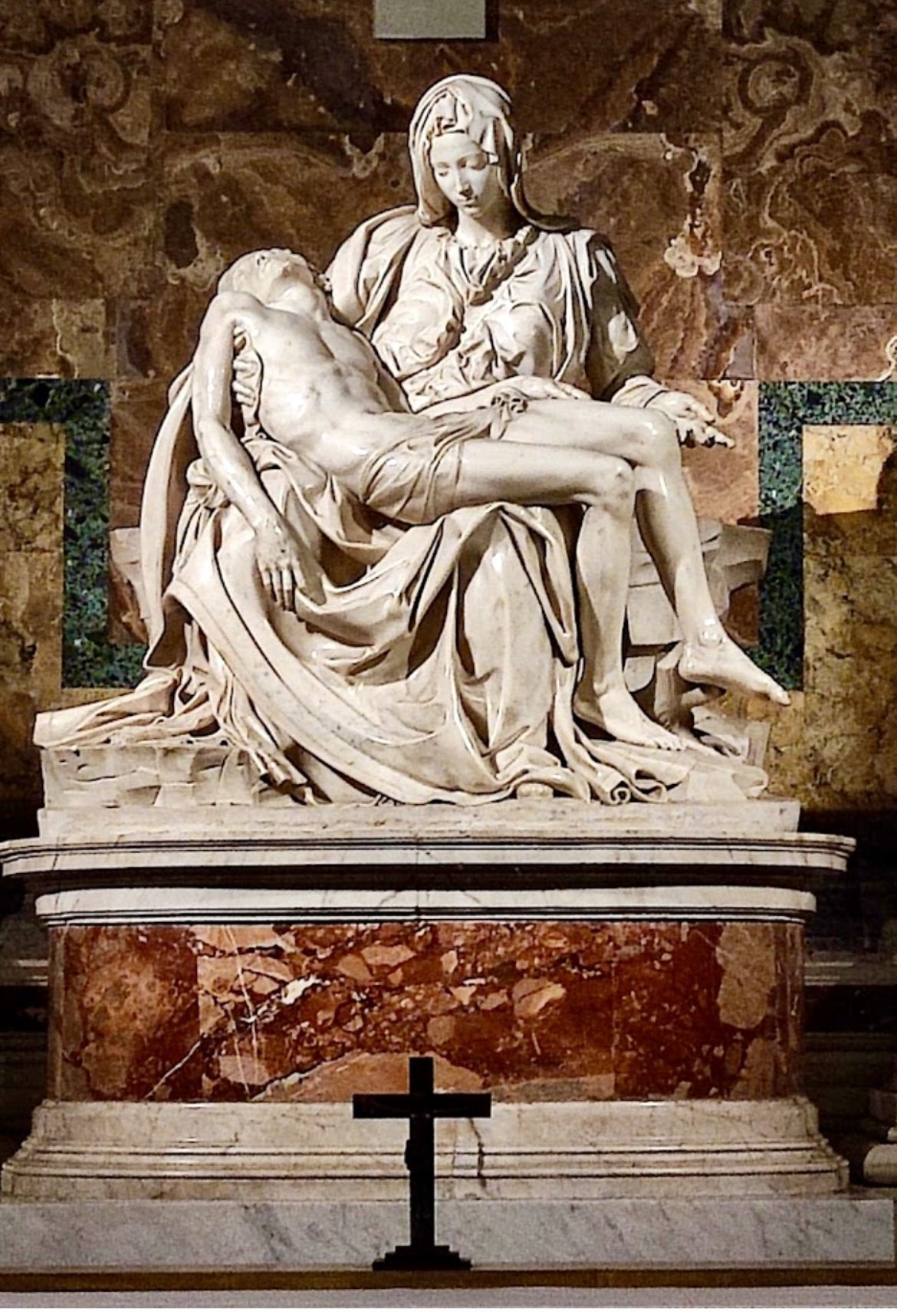
The Pietà
At age 72, Michelangelo also designed the church dome (below) but did not live to see it completed. For an extra fee, you can climb the steps to the dome and see the basilica, and Rome, from a whole new viewpoint.
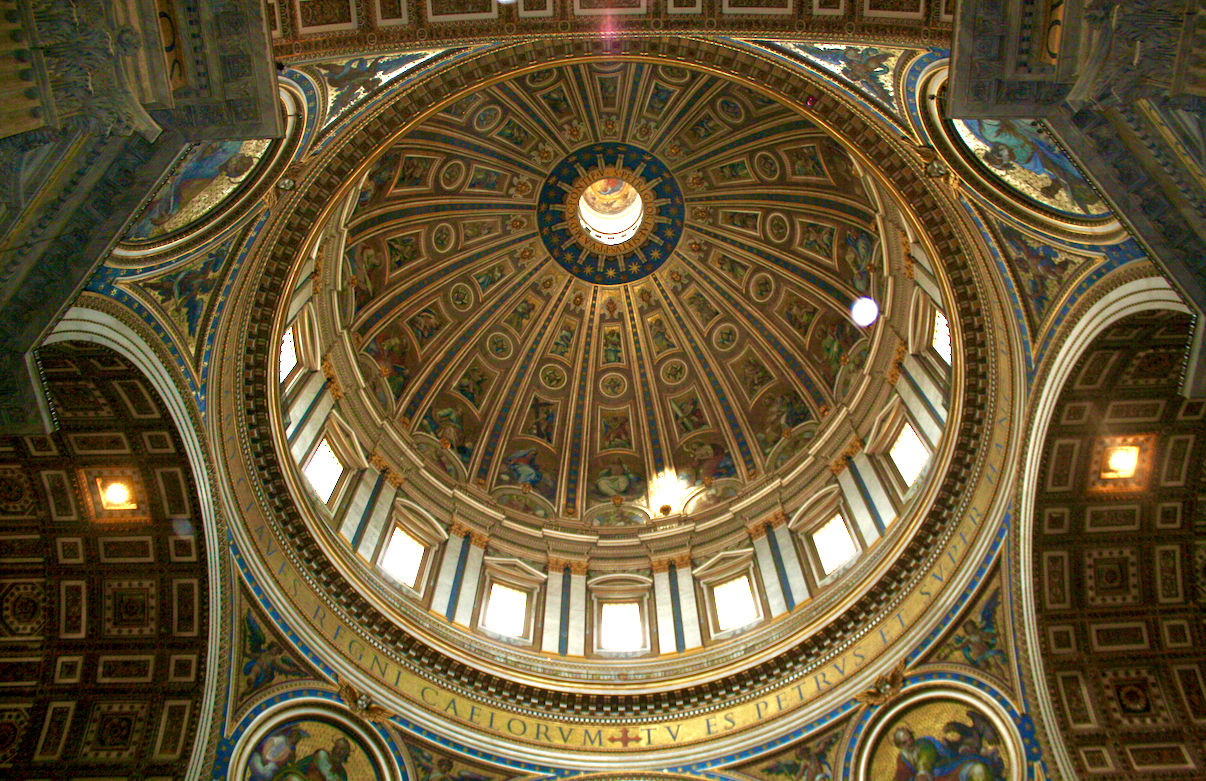
Gian Lorenzo Bernini
Bernini spent 50 years creating masterpieces for the interior of the basilica, including the Baldacchino High Altar (below). He designed and sculpted the Throne of Saint Peter (located behind the altar), plus the tomb and Monument to Alexander VII, the equestrian statue of Alexander the Great, and the giant sculptures of four saints.
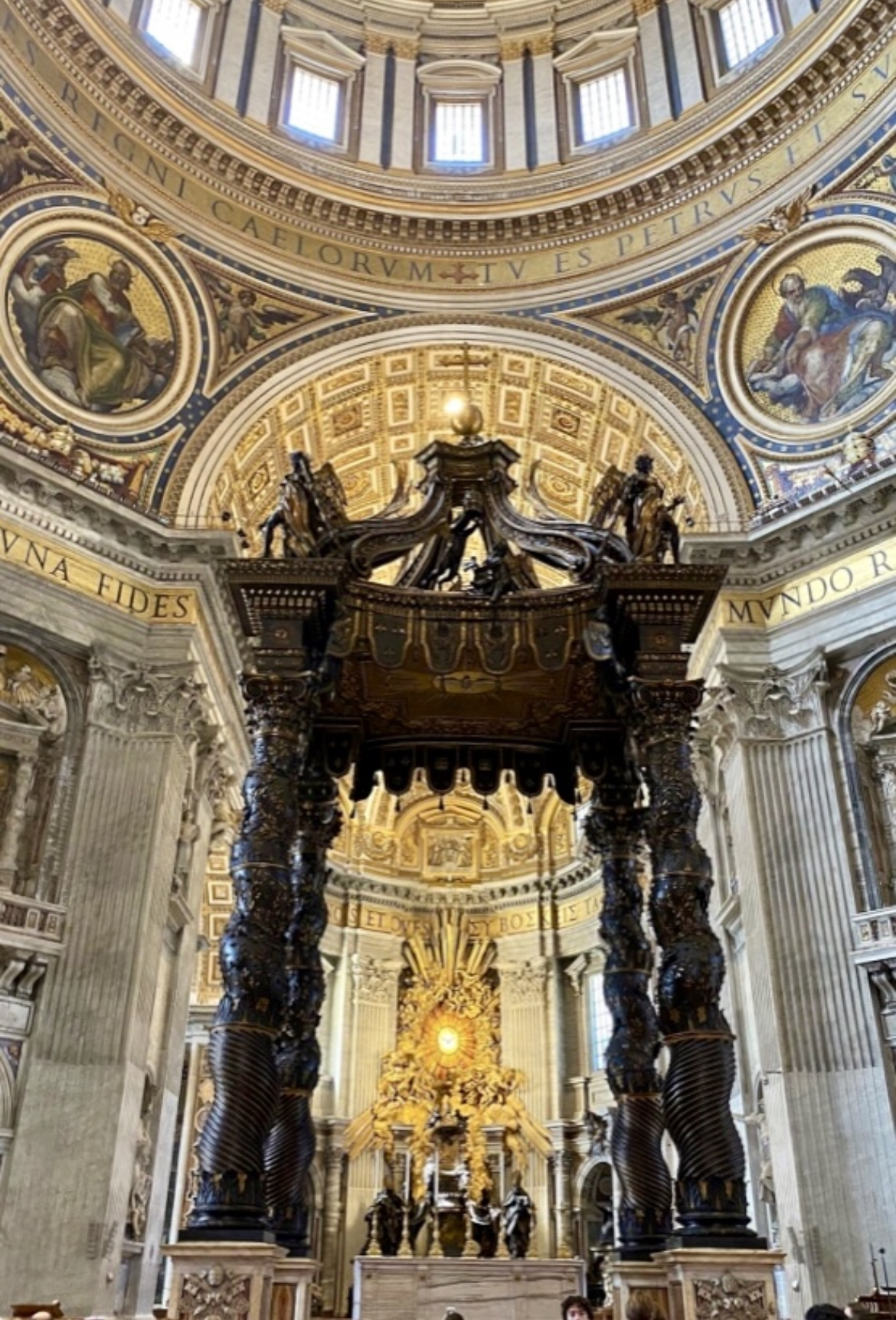
Outside, Bernini designed St. Peter’s Square, one of the largest and most beautiful plazas in the world (the square is featured on the Vatican book cover posted earlier).
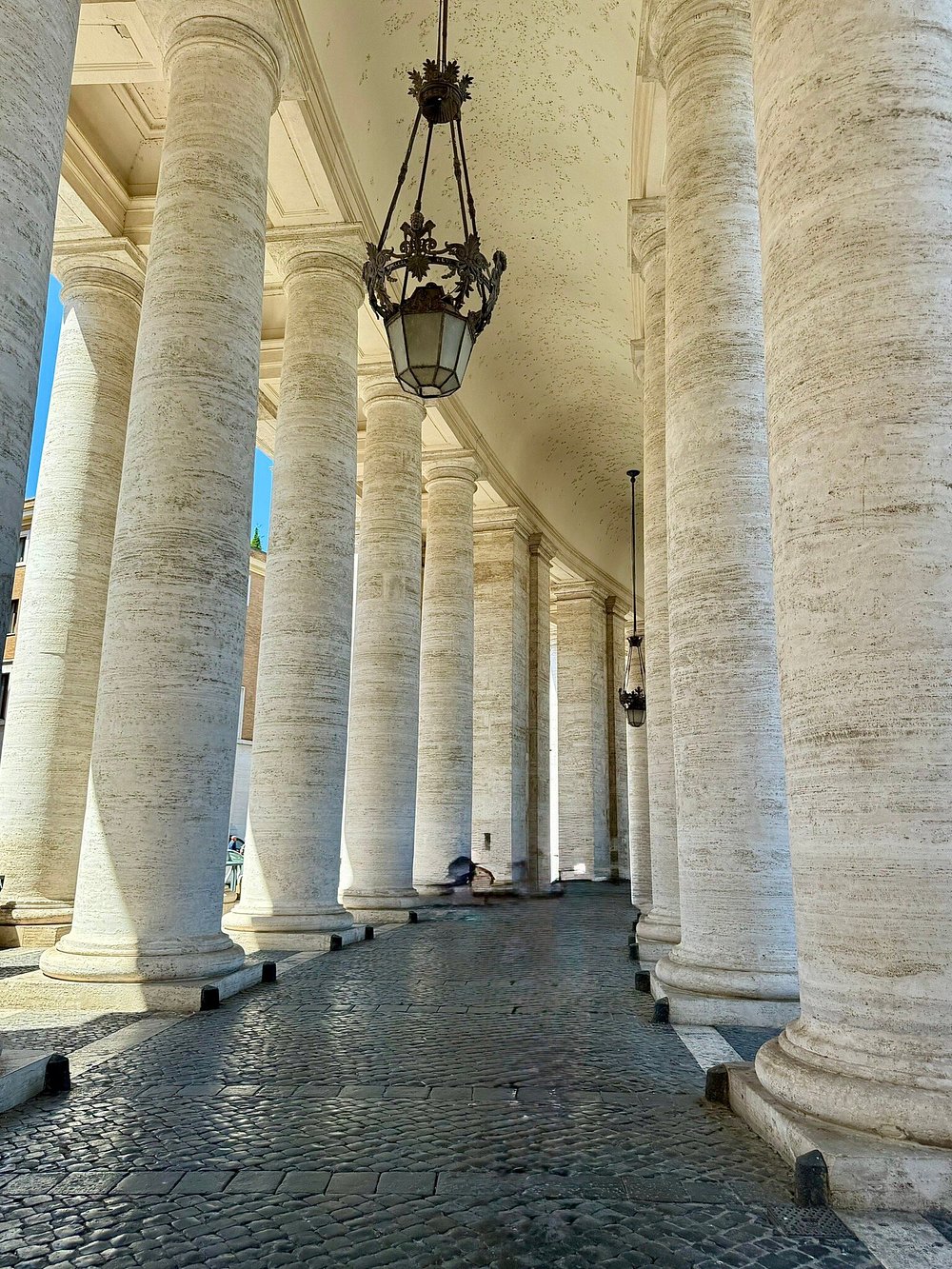
The 284 Doric travertine marble columns outside St. Peter’s Basilica were also designed by Bernini and topped with 140 statues of saints.
The Tomb of St. Peter
Can visitors go into the Necropolis (cemetery just below the High Altar) and see St. Peter’s Tomb? Yes, with some planning.
Only 250 people a day (in groups of 12) are allowed on the tour vs. the 40,000 who visit the basilica each day. You’ll need to e-mail the Vatican Scavi directly at [email protected].
Provide the following information: the exact number of visitors, the names and surnames of each visitor, your preferred language, the dates you are available and your contact information. They suggest you do this request the moment you book your flights. Tickets are €13 per person, and visitors must be at least 15 years old and up.
The Jubilee Holy Door
The bronze Jubilee Holy Door (the Porta Sancta) designed by Vico Consorti is the northernmost entrance to the basilica. It is cemented shut, completely sealed, and only opened every 25 years for the Jubilee Holy Year.
According to the Catholic Church, Rome is experiencing even more visitors as the latest Jubilee Holy Year (2025) began December 24, 2024 and lasts until January 6, 2026. The next Jubilee Year is 2050, but an “Extraordinary Jubilee” will take place in 2033, marking 2000 years since the redemption of Christ.
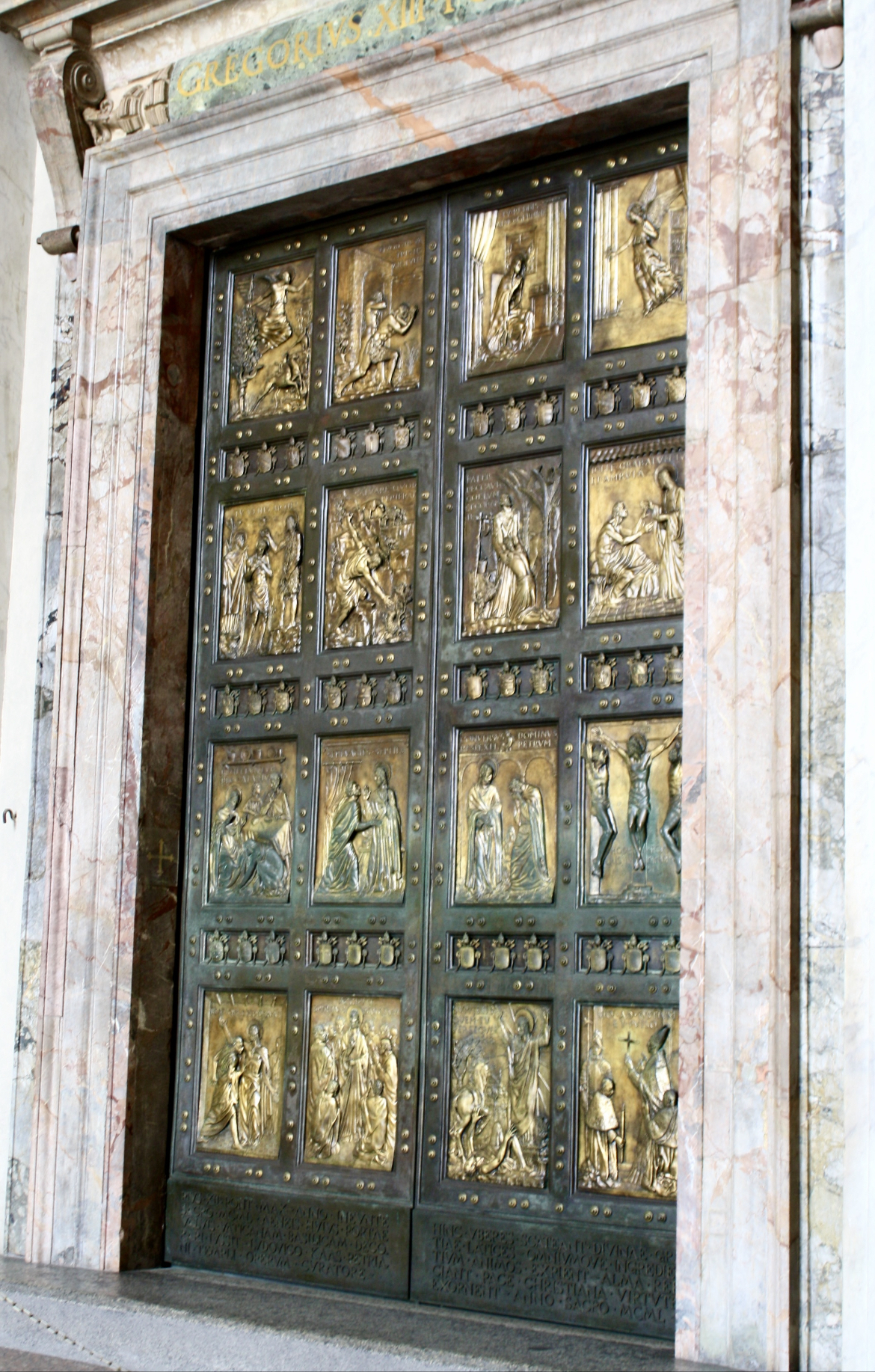
Pilgrims flock to the Vatican during the Jubilee because it is said “whoever crosses the threshold of the door will have divine forgiveness.”
The Roman Colosseum
Next: we crossed the city to explore the Roman Colosseum and the Forum.

Emperor Vespasian commissioned Rome’s great oval amphitheater in 72 AD. It is the largest amphitheater ever built and still the largest standing in the world today. Did I mention it was built in the first century?
The Colosseum was built over the former Colossus of Nero, a bronze statue from Nero’s palace, which gave the amphitheater its name. It could hold up to 80,000 people who were seated ‘by rank.’
Patterned after this very building, the world is now filled with colosseums, stadiums and theaters.
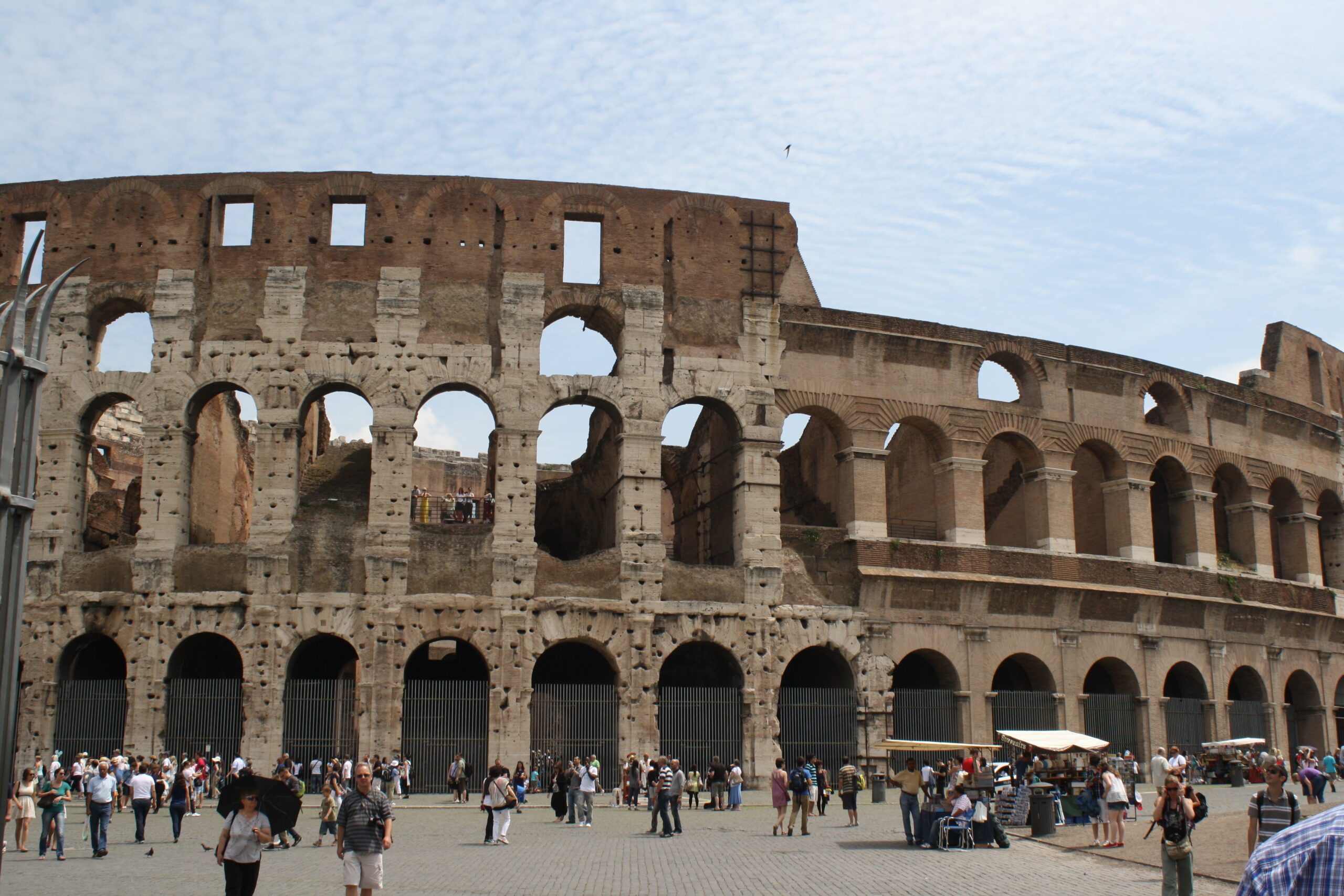
Deadly gladiator combats and wild animal fights were held on a mass scale. Animal hunts, re-enactments of famous battles, executions, mythology dramas, and floors were even flooded for mock sea battles. Over 9000 wild animals were killed in the inaugural games held in 80 AD. Roman gladiators were either soldiers-in-training, slaves, criminals, and/or prisoners forced to fight each other, or wild animals, often to the death.
Inside the arena and below the floor was an elaborate structure called the hypogeum. It was a 2-story underground network of tunnels and cages where gladiators and animals (even elephants, bears and crocodiles) were held before contests began.
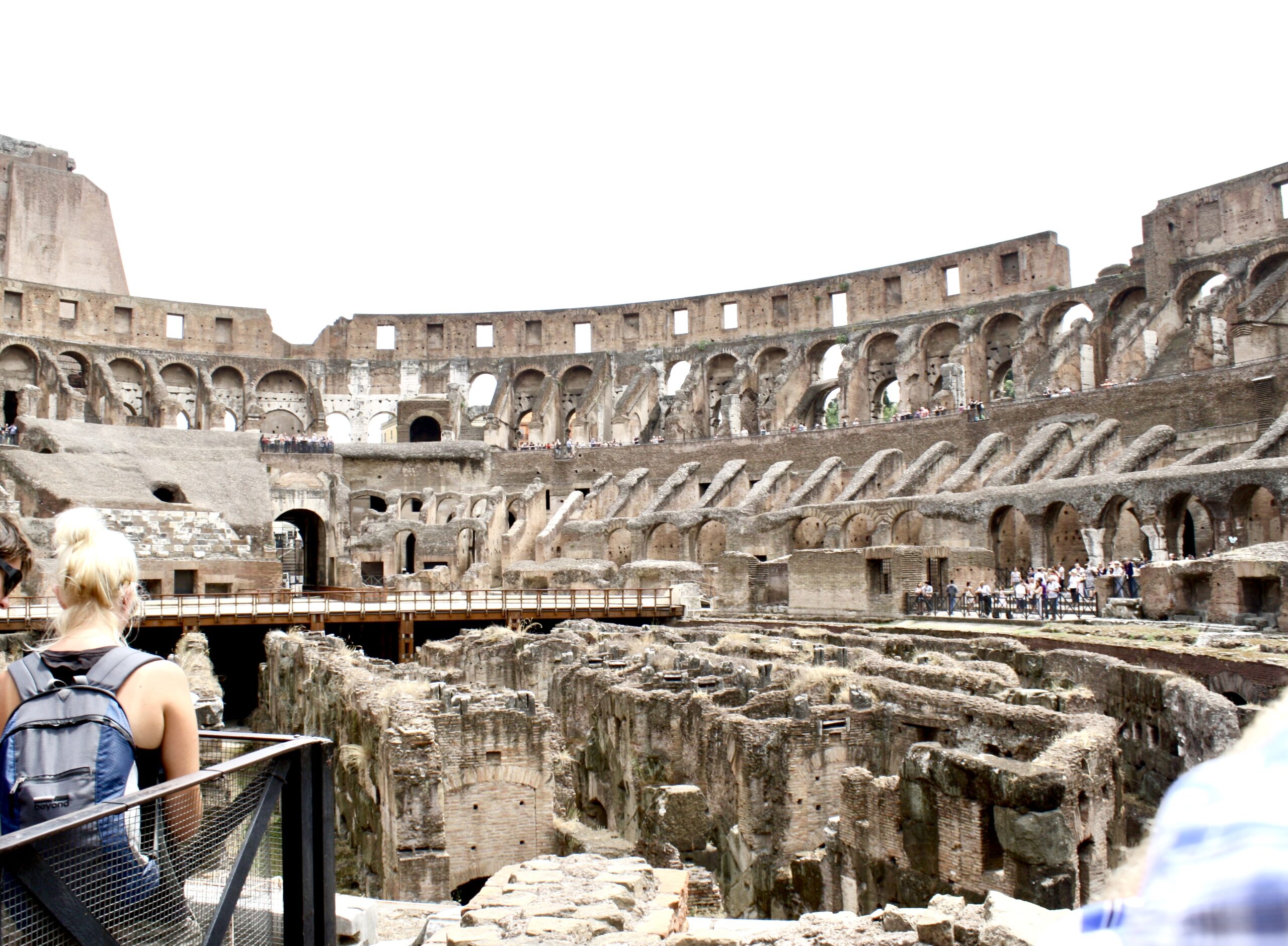
It also included 80 vertical shafts, using elevators and pulleys, to raise and lower animals and gladiators to the arena floor. Gladiators had an underground tunnel to their training school. Successful gladiators were famous and even rich, but this was no Disney World job!
After the fall of the Roman Empire, the Colosseum was neglected and pillaged, and it was later damaged by fires and earthquakes. When some of the outer walls collapsed, that stone was used to build palaces, hospitals and churches.
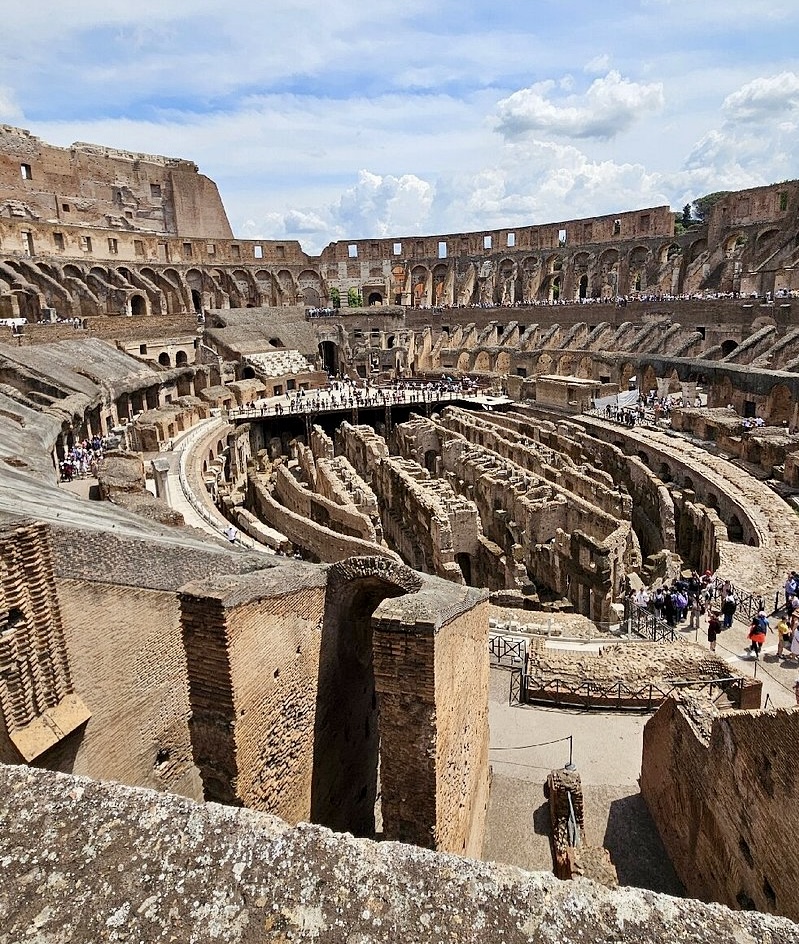
The Roman Forum and Palatine Hill
The Forum was the heart of Rome and the hub for everyday life.
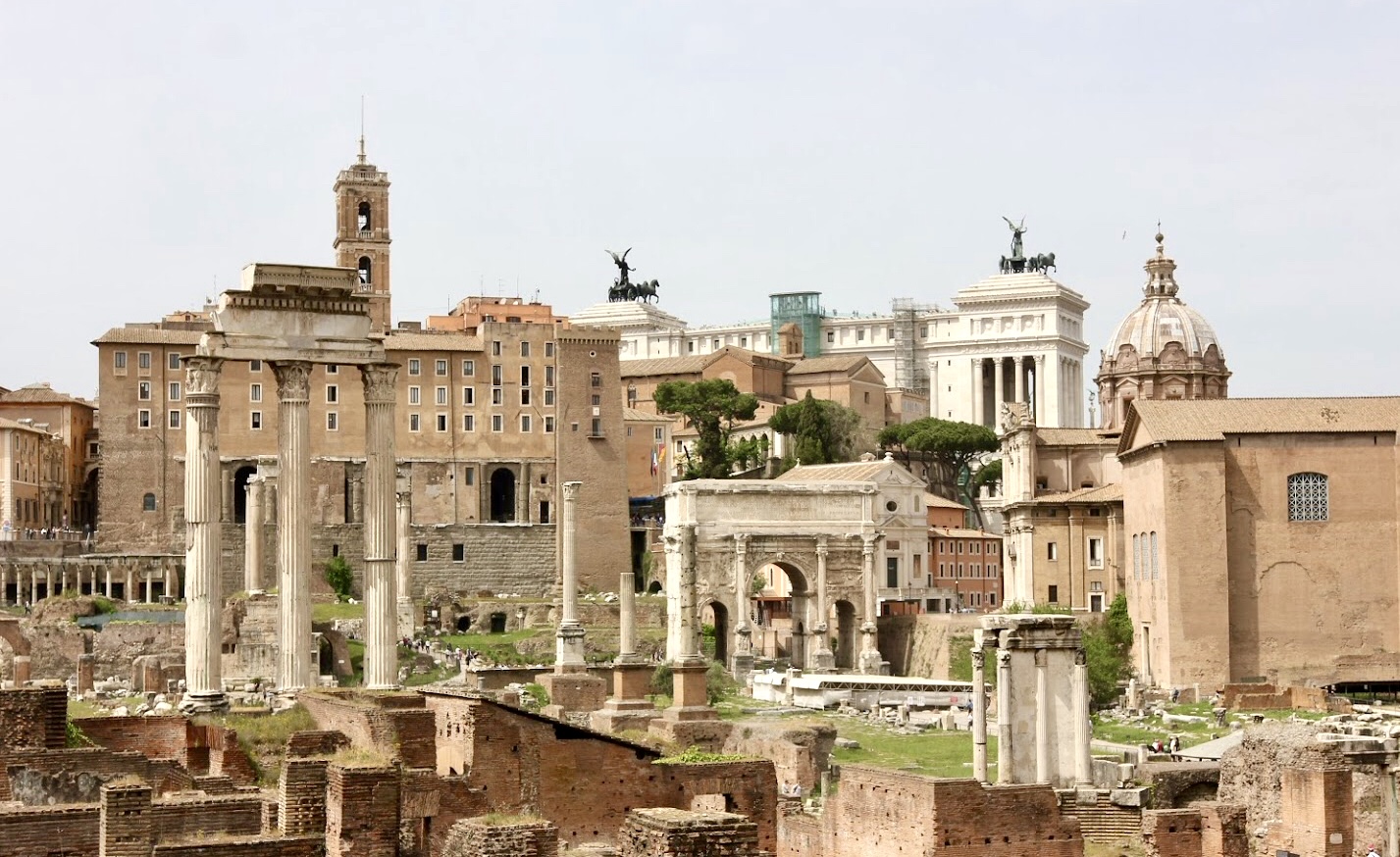
It began as a marketplace around 500 BC and kept evolving. Statues, triumphal arches, brothels, lots of temples, shops, bath houses, a large plaza, aqueducts, and other buildings were added by Julius Caesar, and later Emperor Augustus (Julius Caesar’s step-son).
Rome’s money was kept in a treasury in the Temple of Saturn (497 BC). After the Senate House was built (44 BC), the Forum became a functional place for elections, public speeches, trials, and religious ceremonies. The main road through the Forum, the Sacra Via, connected to the Colosseum. Most of the ancient buildings became ruins after the Roman Empire fell.
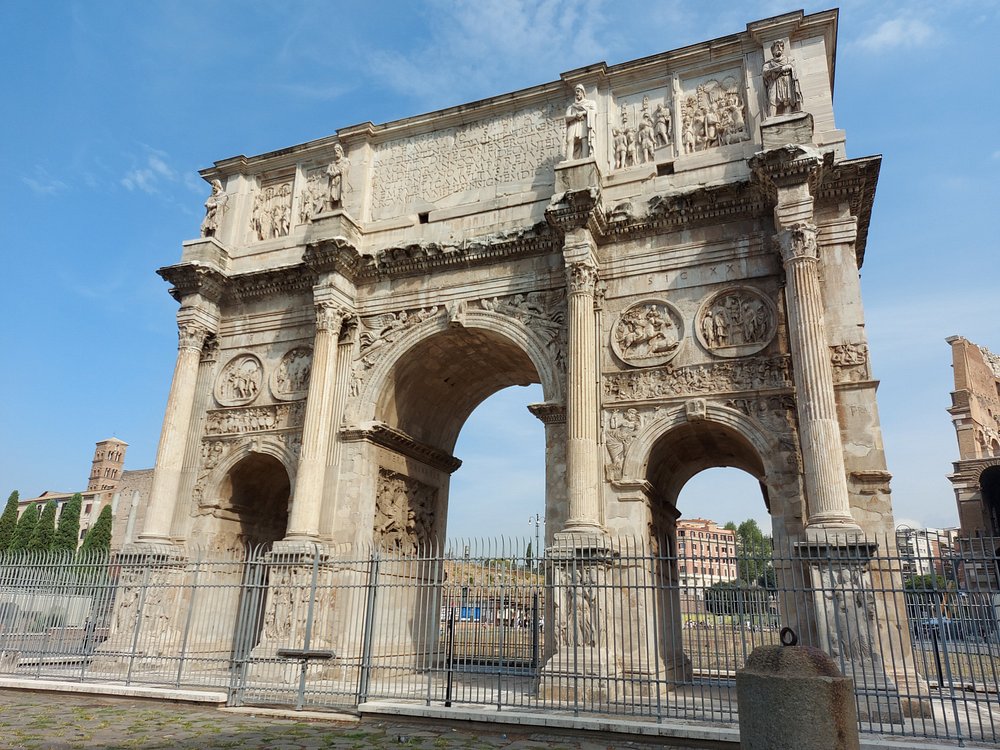
The triumphal arch dedicated to Constantine the Great in 315 AD.
Palatine Hill, the most popular of the Seven Hills of Rome, is now an open-air museum and one of the oldest Rome neighborhoods. You can see the palace ruins of Emperors Augustus, Tiberius and Domitian. (Below)
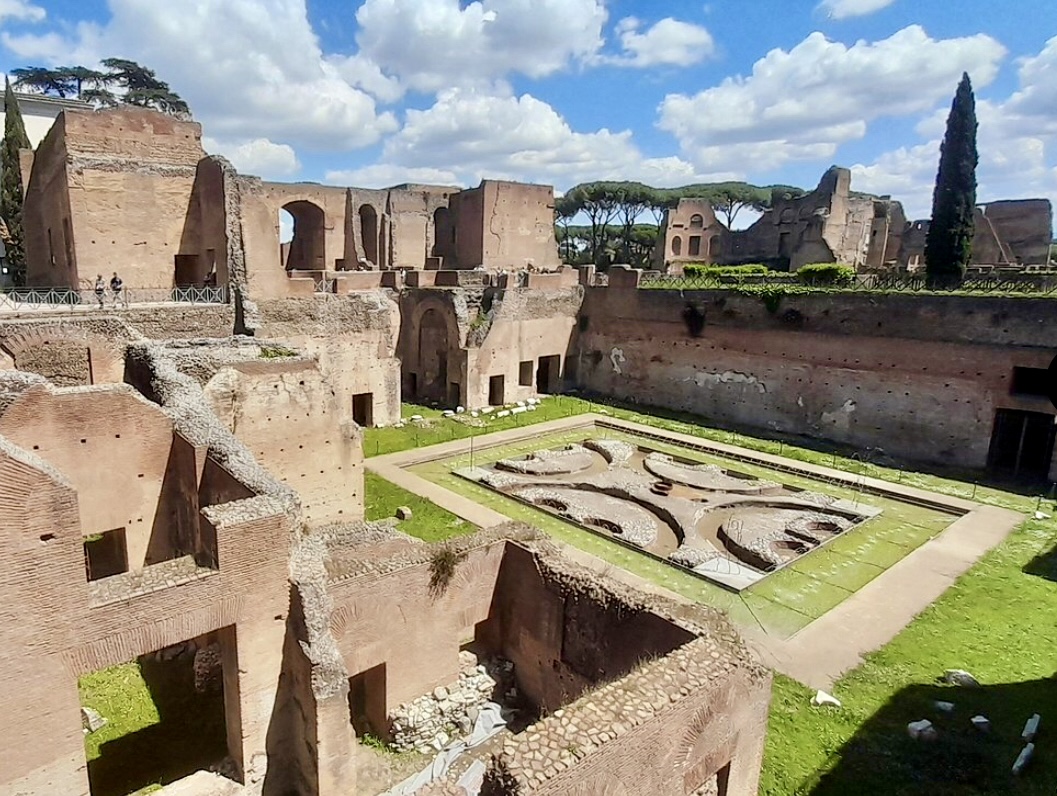
Roaming Around Rome
One thing I appreciate about traveling with Independence by Globus is the free time to wander. In between our Rome Highlights Tour, (plus a day trip to Pompeii and the Amalfi Coast), we independently explored Rome and added a fun excursion.
And that is where we will begin Part Two of this blog. BUT, one more thing:
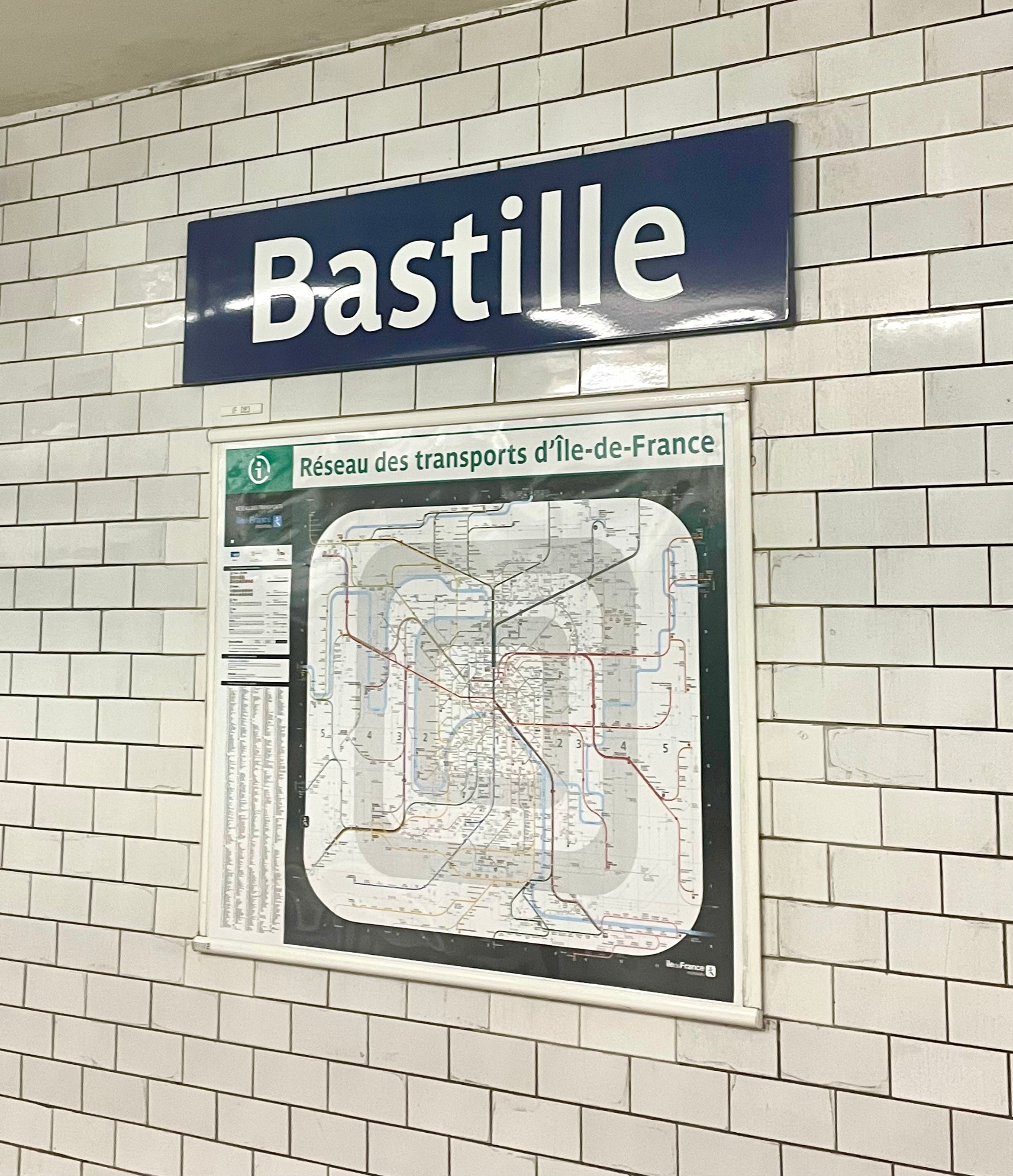
Why have I included a photo of the Bastille metro (subway) station sign in Paris?
Several years ago, a friend and I were in Paris taking the subway to the Marais district. From the La Tour-Maubourg station to the Bastille station, there are 10 subway stops. Lost in conversation, we MISSED our stop and simultaneously shouted “BASTILLE!”
It was not the end of the world, but we had to go to the next stop and return to the Bastille station. We didn’t waste a ticket; we just wasted our time. We now claim this as “having a Bastille moment.“
All this to say, on every trip (even a short road trip) you may have some challenges or make a mistake. You can plan well, but a trip will rarely be perfect. Don’t let your frustrations ruin your day, your trip, or everyone else’s trip! To this day, I still shout “BASTILLE!” when I mess up.
Chances are you will get separated from your group, take the wrong exit, luggage will get lost, you’ll get on the wrong train OR exit it too soon. You might eat a strange meal because your order got lost in translation, you’ll think you’ve misplaced your only Airbnb key; or you’ll get lost trying to find your way back to your hotel (compliments of Venice). These Bastille moments have all happened to me!
Remember: it’s a blessing to get to travel, even if you have a Bastille moment!
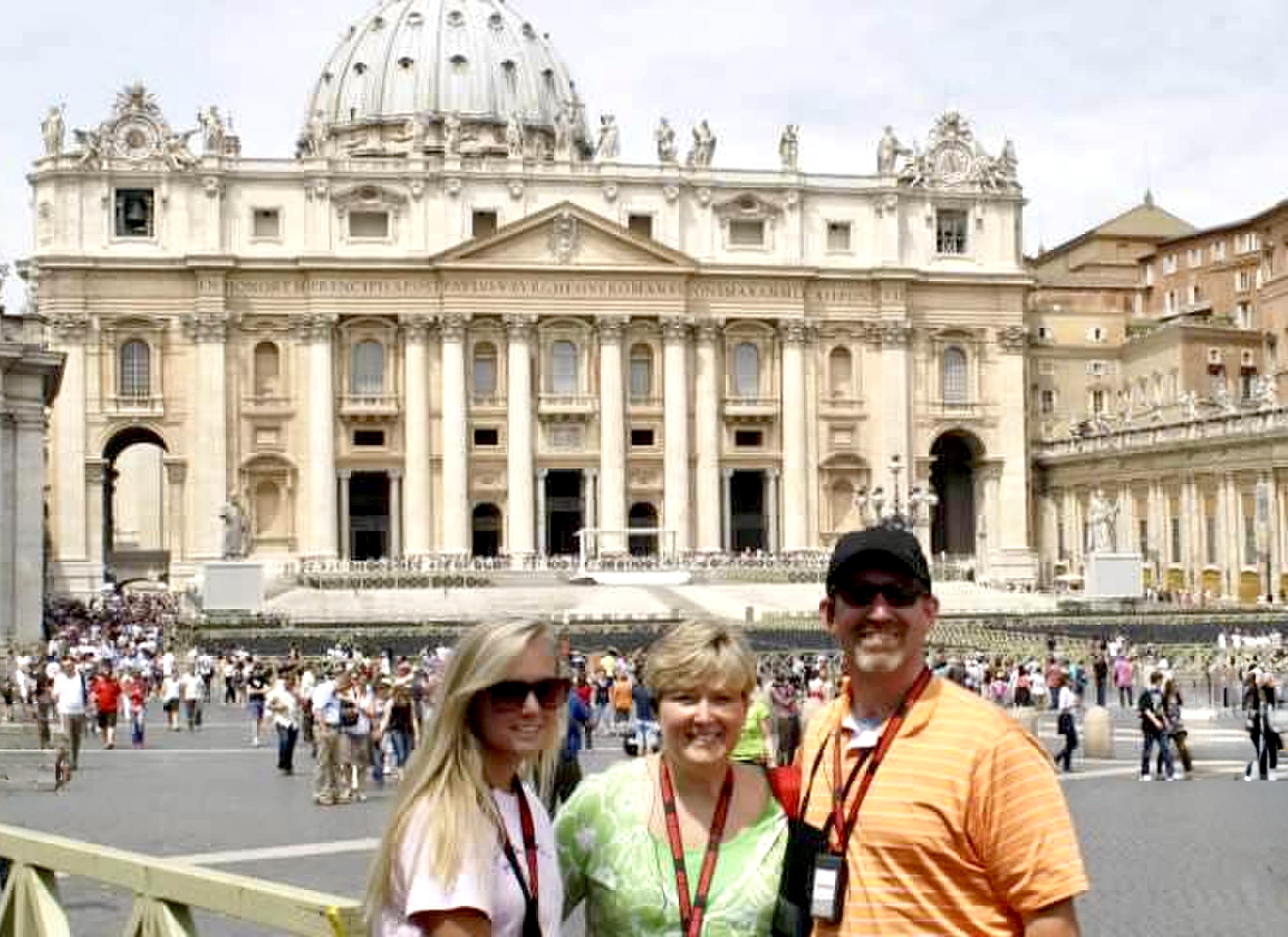
What's Next:
Until next time, keep exploring! And, Ciao for now!
Check out my Rome – Let’s Visit the Eternal City Part Two here: Rome – Let’s visit the Eternal City – Part Two
Read all of my Italy travel blogs about Pompeii, Positano, and the Amalfi Coast The Amalfi Coast and Pompeii – Italy, Florence Fabulous Unforgettable Florence – Part One and Fabulous Unforgettable Florence – Part Two, Pisa and the Leaning Tower Pisa and the Leaning Tower – Defying Gravity, and Venice Enchanting Venice – Part One and Enchanting Venice – Part Two.
Tami Kooch